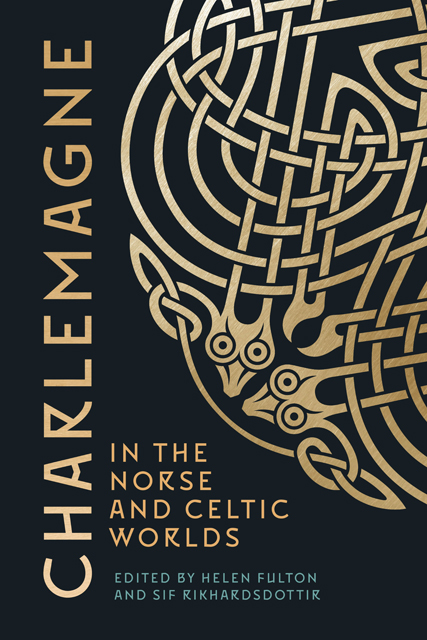Book contents
- Frontmatter
- Contents
- List of Maps and Figures
- List of Contributors
- General Preface: Charlemagne: A European Icon
- Acknowledgements
- Map
- Introduction: Transmission of Charlemagne in Scandinavia, Wales, and Ireland
- Part I The Norse Charlemagne
- Part II The Celtic Charlemagne
- Bibliography
- Index
- Bristol Studies in Medieval Cultures
6 - Charlemagne in Ireland: Manuscripts and Audiences
Published online by Cambridge University Press: 08 June 2023
- Frontmatter
- Contents
- List of Maps and Figures
- List of Contributors
- General Preface: Charlemagne: A European Icon
- Acknowledgements
- Map
- Introduction: Transmission of Charlemagne in Scandinavia, Wales, and Ireland
- Part I The Norse Charlemagne
- Part II The Celtic Charlemagne
- Bibliography
- Index
- Bristol Studies in Medieval Cultures
Summary
The range of Charlemagne material that survives from medieval Ireland can, on the face of it, look rather meagre. Irish interest in Charlemagne literature also seems to emerge quite late. While tales of Charlemagne and his vassals are written and read across much of Europe from the twelfth century onwards, such works only appear to gain a significant readership in Ireland in the latter half of the fifteenth century. Not only does Charlemagne material appear late in Ireland; it also seems rather limited in variety. Only two major texts, the Pseudo-Turpin Chronicle (known as Gabháltais Shearluis Mhóir, i.e. the conquests of Charles the Great) and Fierabras (Sdair Fortibrais, i.e. the life of Fortibras), were translated into early modern Irish in this period. Latin texts of these works also survive in a fifteenth-century Irish codex, and it seems likely that the translation of Fierabras from French into Latin also took place in Ireland. This Latin Fierabras, in turn, furnished the source for the Irish translation.
Gabháltais Shearluis Mhóir and Sdair Fortibrais seem to have become two of the most popular Irish translations of foreign narrative, surviving in a relatively high number of manuscripts. Charlemagne also features, albeit less prominently, in other Irish-language texts of this period, such as Sdair na Lumbardach (‘The History of the Lombards’) and an Irish adaptation of the well-known romance, Octavian, which transfers the plot to a Carolingian setting. Library inventories offer some further, very limited, evidence of Charlemagne texts circulating in English and in French. This chapter will sketch the broad outlines of the circulation of Charlemagne narratives in Ireland, focusing primarily on the Latin and Irish texts of the Pseudo-Turpin Chronicle and Fierabras. It will examine the surviving manuscript contexts for these works and consider who the early audiences of these texts might have been. An interesting feature of the transmission of these works in Ireland is that they tend to appear in manuscripts of largely religious material.
Engagement with Charlemagne narratives in Ireland offers some interesting points of comparison and contrast with treatment of similar texts elsewhere in the insular world. The wide circulation of the Pseudo-Turpin Chronicle is well attested across Europe, and translations into all the other major insular vernaculars survive. Of course, in the Norse and Welsh-speaking regions, the Pseudo-Turpin Chronicle was translated much earlier than it was in Ireland.
- Type
- Chapter
- Information
- Charlemagne in the Norse and Celtic Worlds , pp. 113 - 131Publisher: Boydell & BrewerPrint publication year: 2022

